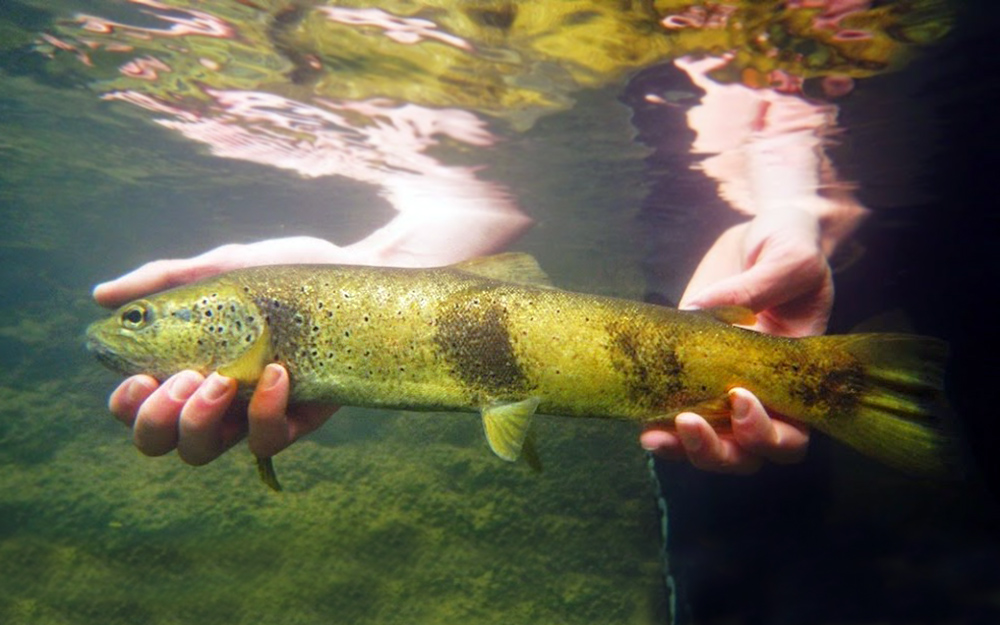Rhone trout
(Salmo rhodanensis)

Classification
Description
Distinguished from all congeners in Europe by its unique body with 4 broad black bars, behind gill opening, under dorsal base, above anal fin origin and at posterior extremity of caudal peduncle ( bars clearly distinct in non-stressed individuals; some Balkan species may show similar bars, but only in very stressed situations; in other species only weakly marked when stressed).
Differs further by the combination of the following characters: caudal fin truncate to slightly emarginate; usually lacking red spots on body; usually lacking red or orange dot on adipose; juveniles with 9-12 vertically elongated parr marks. The 4 bars are present in populations of Dourbie (upper Tarn system, France), which is distinguished by having red spots and dorsal, pelvic, and anal fins with white anterior margin. This represents possibly an introgression zone between Salmo rhodanensis and Salmo c.f. cettii.
Biology
Inhabits rivers and streams in clear, cold, well oxygenated water and with slow to fast current. Preys on invertebrates, fish and amphibians. Spawns in late December on gravel or coarse sand. Several populations represent a significant proportion of hybrids with Salmo trutta produced in aquaculture and stocking.
Attains a maximum size of up to about 80 cm SL.
Distribution
Europe: Rhône drainage, except Lake Geneva basin (France, Switzerland), eastward to Roia drainages (France, Italy), possibly further eastward in Ligurian Sea basin.










